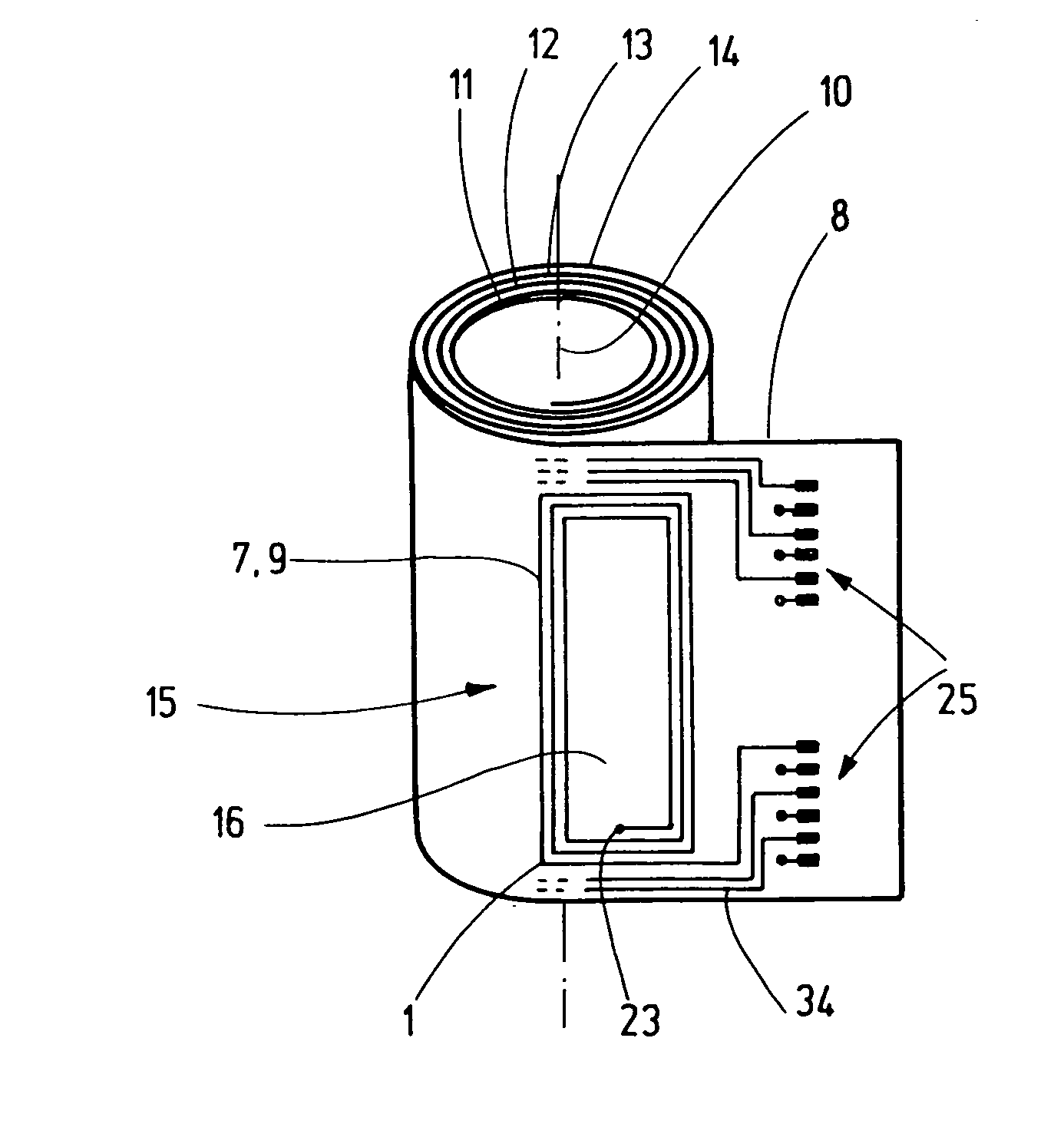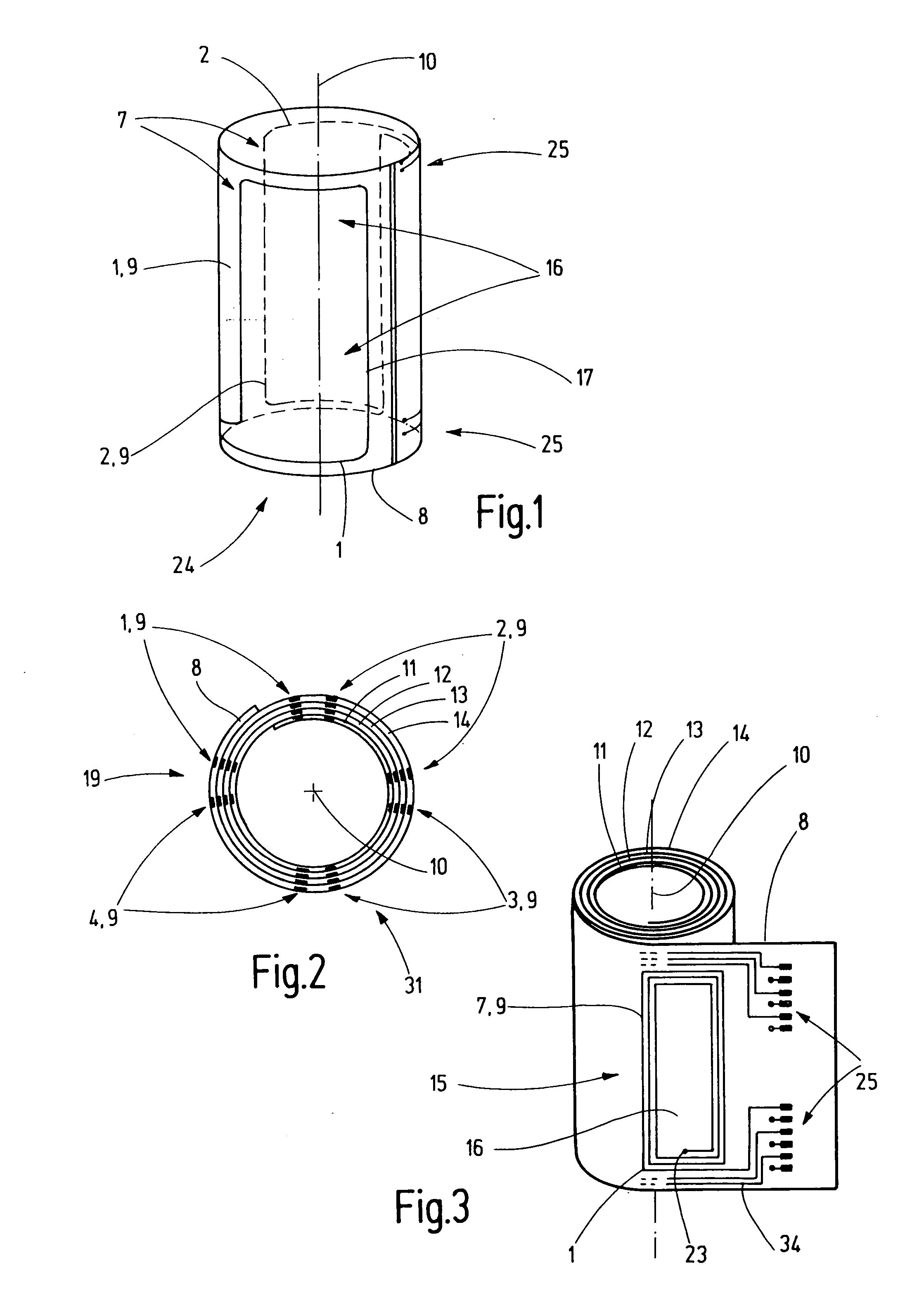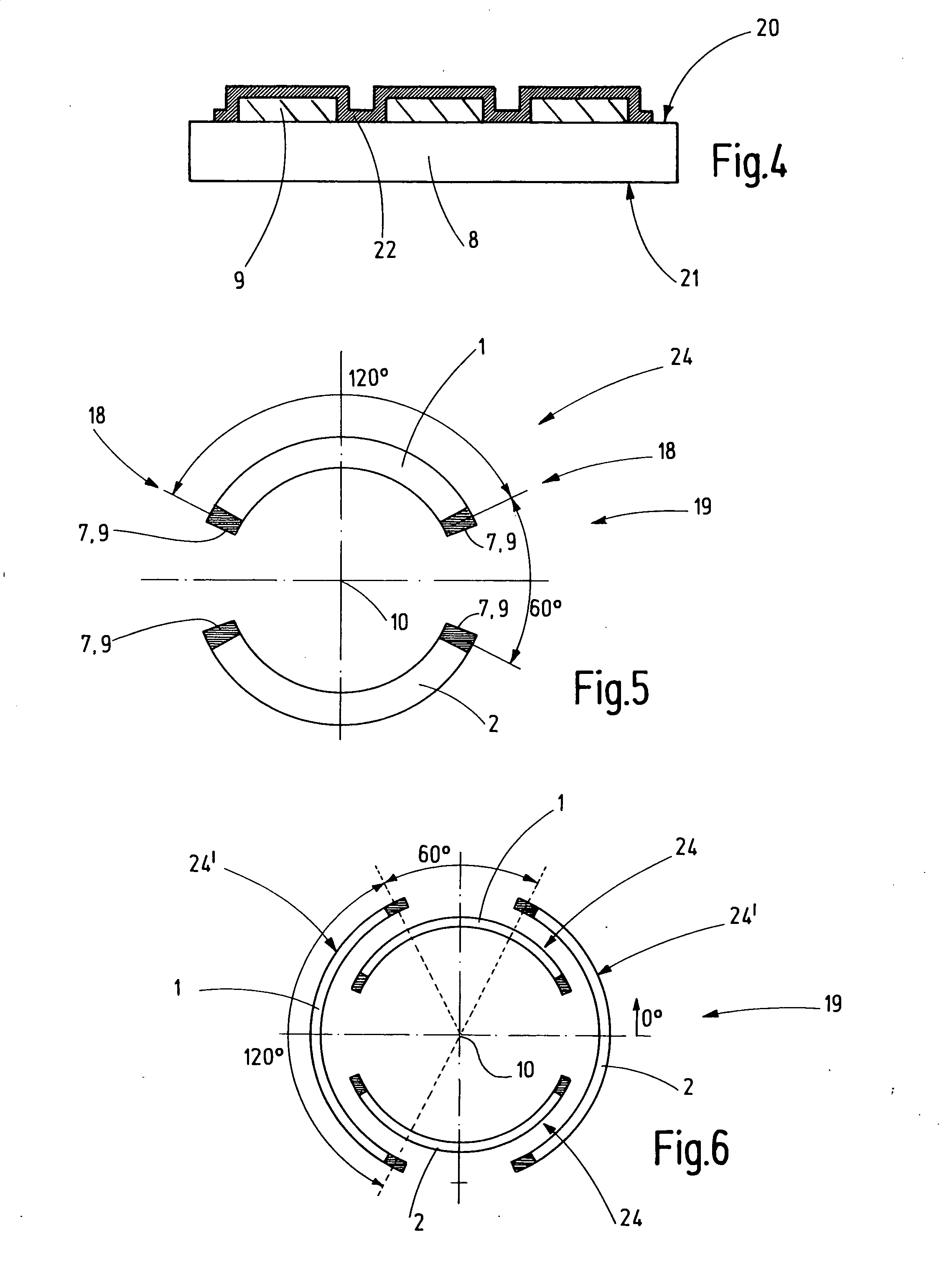Multipole coils
a multi-coil, multi-coil technology, applied in the direction of coils, electromagnets, magnetic discharge control, etc., can solve the problems of large space, inability to precisely reproduce the manufacturing process, and deviations cannot be prevented, so as to improve heat dissipation, increase current, and improve heat dissipation
- Summary
- Abstract
- Description
- Claims
- Application Information
AI Technical Summary
Benefits of technology
Problems solved by technology
Method used
Image
Examples
Embodiment Construction
[0051]FIG. 1 shows a simple embodiment of the invention in order to explain the basic principle. Two coils 1 and 2, which each consist of one winding 7, are disposed on a printed circuit board 8 for generating a dipole 24. Each winding 7 is disposed on the printed circuit board 8 in the form of a strip conductor 9, and is loaded with current via connections 25. The windings 7 form rectangular windows 16 with rounded edges, wherein the long sides 17 of the windows 16 are oriented along an imaginary axis 10. The axis 10 is the optical axis when the multipole coils are used in the field of particle optics. The printed circuit board 8 is made from a flexible material and rolled into a cylinder which is hollow inside, such than the two coils 1, 2 concentrically enclose the axis 10.
[0052]FIG. 2 shows a sectional view of one embodiment, in which the printed circuit board 8 is rolled in several printed circuit board layers 11, 12, 13, 14. These multipole coils 1, 2, 3, 4 form a quadrupole 3...
PUM
| Property | Measurement | Unit |
|---|---|---|
| outer diameter | aaaaa | aaaaa |
| outer diameter | aaaaa | aaaaa |
| diameter | aaaaa | aaaaa |
Abstract
Description
Claims
Application Information
 Login to View More
Login to View More - R&D
- Intellectual Property
- Life Sciences
- Materials
- Tech Scout
- Unparalleled Data Quality
- Higher Quality Content
- 60% Fewer Hallucinations
Browse by: Latest US Patents, China's latest patents, Technical Efficacy Thesaurus, Application Domain, Technology Topic, Popular Technical Reports.
© 2025 PatSnap. All rights reserved.Legal|Privacy policy|Modern Slavery Act Transparency Statement|Sitemap|About US| Contact US: help@patsnap.com



